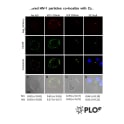We could not find the product you're looking for. Please try to search again.
7052 Reagents
Anti-HIF1A [Ha111a]
Invented by Helen Turley at University of Oxford
Anti-SIGLEC1 [HSn 7D2]
Invented by Prof Paul Crocker at University of Dundee
Anti-Keratin18 [LC18N]
Invented by Prof Birgit Lane at University of Dundee
Anti-CD33 [6C5/2]
Invented by Prof Paul Crocker at University of Oxford
Anti-AnnexinII [ANEX 3D5/4]
Invented at University College London
Anti-AnnexinI [ANEX 6E4/3]
Invented at University College London




